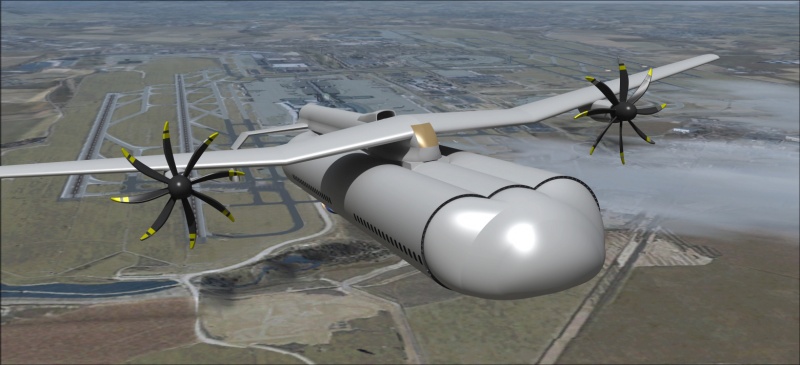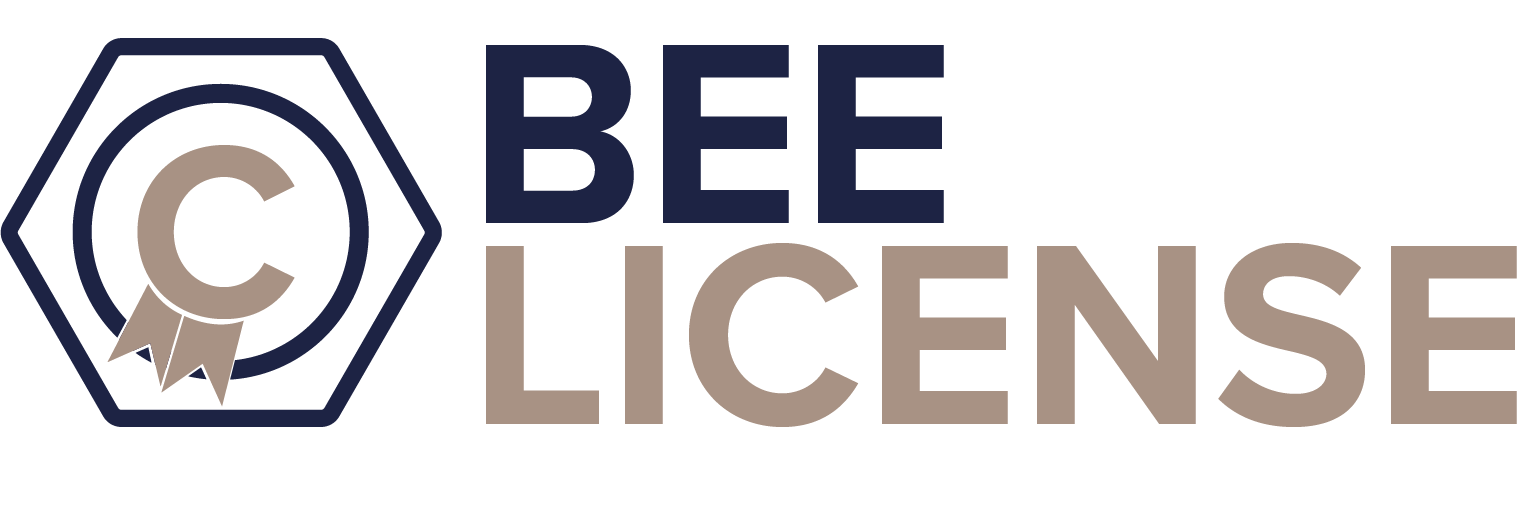Bee-Plane™
Bee-Plane™ is an open collaborative aerospace project developed under the Lesser Open Bee License 1.3 since 2013 (previously version 1.2 in 2012).
The project achieved TRL 1 during its early research phase and entered TRL 2 in 2019.
It gathers contributions from multiple universities — including ESTACA, ENSTA Paris, ECL, INSA Toulouse — and industrial partners coordinated by Technoplane SAS.

Visit the Bee-Plane Official Website
What Is a Detachable Fuselage Aircraft?
A detachable fuselage aircraft is an innovative aircraft concept featuring a fuselage (the main body of the airplane) that can be separated or detached from the wing and propulsion structure — the “Bee.”
This modular architecture allows flexibility, efficiency, and rapid transformation for multiple missions.
🚀 Key Advantages and Use Cases
- Fast Logistics and Turnaround: Detach the fuselage (“Basket”) to load or unload passengers or cargo while another mission-ready Bee is prepared for flight, saving ground time.
- Maintenance and Accessibility: The fuselage can be separated for maintenance or upgrades without grounding the entire aircraft.
- Mission Adaptability: Interchangeable modules allow passenger, freight, medical, or firefighting configurations using the same Bee structure.
- Emergency Safety Options: In advanced versions, the fuselage could be designed for controlled detachment in critical situations, improving evacuation capabilities.
🛩 Concept and Engineering Principles
The Bee-Plane is composed of two main elements:
- The Bee: The lifting and propulsion module (wings, engines, landing gear, cockpit).
- The Basket: The detachable fuselage module, adaptable for passengers, freight, or medical operations.
This approach draws inspiration from sustainable and modular transportation logic — reducing downtime, reusing key aircraft structures, and enabling a circular economy for aviation design.
Different attachment mechanisms — mechanical, hydraulic, or guided pin systems — are being studied within open academic projects, where each year student teams improve aerodynamic, structural, and interface aspects using Onshape, SimScale, and Blender GIS.
🌍 Collaborative Ecosystem
The Bee-Plane is one of several projects coordinated within the Collaborative Bee Ecosystem, alongside Mini-Bee (a 2-seat hybrid VTOL) and ISO-Plane (a cargo aircraft for ISO containers).
All of them are developed under open collaboration by engineering schools and research partners following the ethical principles of the Lesser Open Bee License 1.3.
Each deliverable — including CAD models, aerodynamic simulations, and management reports — is openly shared with attribution:
“Task achieved under the Lesser Open Bee License 1.3 – © Coordinator Technoplane SAS.”
📚 Learn More
- Lesser Open Bee License 1.3 – Official Website
- Bee-Plane Project Portal
- Collaborative Bee Community Wiki
Open-source project realized under the Lesser Open Bee License 1.3 – © Coordinator Technoplane SAS.
The Bee-Plane Collaborative Project
Bee-Plane™ is not just a single prototype — it is a collaborative, open-source engineering program involving multiple universities and industrial partners under the coordination of Technoplane SAS.
Since its creation, Bee-Plane has been developed as part of the Open Bee Ecosystem, a research and education initiative promoting open innovation in aeronautical design through the Lesser Open Bee License 1.3.
Each academic year, new student teams from engineering schools contribute to the project, improving aerodynamics, structure, and systems.
The project demonstrates how the open-source model — traditionally associated with software — can be applied to complex aerospace systems engineering.
📜 Origins and Vision
Bee-Plane was first proposed in 2011–2012 with the ambition to design a medium-range aircraft with a detachable fuselage.
The idea is to separate the aircraft into two main entities:
the Bee — a reusable lifting and propulsion unit — and the Basket — a detachable module optimized for different missions.
By standardizing the interface between these two parts, Bee-Plane enables a new aviation paradigm: multi-mission reconfigurability.
Passenger, cargo, medical evacuation, firefighting, or humanitarian transport can all be achieved using the same Bee with different Baskets.

🎓 Academic Collaboration and Open Science
The Bee-Plane project is one of the most long-running open-source aerospace collaborations in Europe.
It involves academic partners from:
- ESTACA – structural analysis, landing gear, and aerodynamic optimization
- ENSTA Paris – system modeling, data analysis, and TRL documentation
- Ecole Centrale de Lyon (ECL) – mechanical design and structural modeling
- INSA Toulouse – aerodynamic computation, CFD simulations, and TRL evaluation
- Cy-Tech – software and algorithmic modeling
These institutions work together through shared documentation, simulation tools, and repositories such as the Collaborative Bee Wiki.
Every student contribution — whether a 3D model, a technical report, or an aerodynamic test — is published openly under the Lesser Open Bee License 1.3, ensuring reusability by future cohorts and partner schools.
⚙️ Design Philosophy
The Bee-Plane’s design philosophy is centered around modularity, maintainability, and sustainability.
This approach reduces lifecycle costs and supports the global effort to decarbonize aviation.
Its detachable structure introduces key innovations:
- Structural Modularity: quick mechanical interface between the Bee and Basket through Twist-Lock systems inspired by maritime containers.
- Energy Efficiency: lighter components and optimized aerodynamic flow reduce fuel consumption.
- Rapid Turnaround: ground operations simplified by pre-loaded fuselages ready for mission exchange.
- Open Collaboration: design files, simulations, and documentation are shared in open formats (.STEP, .PDF, .CSV) to guarantee continuity.

🔬 Research and TRL Development
The Bee-Plane is progressing through the Technology Readiness Level (TRL) framework:
- TRL 1: Concept definition and feasibility studies completed (2013–2019)
- TRL 2: Structural and aerodynamic validation (2019–2023)
- TRL 3: Experimental validation and physical models under development (2024–2025)
Each TRL milestone is documented by academic teams and reviewed through open audits conducted by Technoplane SAS, ensuring data quality and traceability across schools.
🧩 Tools and Open-Source Methods
All engineering teams use professional yet open-accessible digital tools to ensure interoperability:
- Onshape for collaborative 3D design (structural models and assemblies)
- SimScale for CFD and mechanical stress simulations
- QGIS and BlenderGIS for geographic and environmental visualization
- CesiumJS for 3D web visualization and interactive presentations
Data and reports are stored under shared version control with strict change-tracking practices.
This ensures that every evolution of the Bee-Plane model is properly referenced and attributed, promoting a reproducible engineering culture.
🌱 Sustainability and Lifecycle Vision
The Bee-Plane’s modularity is also a step toward sustainable aviation.
By reusing the Bee structure for multiple missions and replacing only the mission-specific Basket, operators can dramatically reduce material waste and carbon footprint.
Combined with hybrid-electric propulsion studies and the use of lightweight composite materials, this approach aligns with the global transition toward greener aviation.

🤝 The Collaborative Bee Ecosystem
The Bee-Plane is part of a family of interconnected projects within the Collaborative Bee Ecosystem coordinated by Technoplane SAS:
- Mini-Bee: a two-seat hybrid VTOL for urban mobility and medical missions.
- ISO-Plane: a cargo aircraft designed to carry ISO 20-foot containers autonomously.
- GPS 4D: a data-driven navigation and flight optimization system for all Bee-based vehicles.
- Inventory Big Data & Data-Fling: frameworks for data interoperability and analytics across Bee-licensed projects.
Each of these projects follows the same open engineering principles — collective authorship, transparent documentation, and collaborative publication.
Together, they represent a new paradigm in aerospace education and research, bridging academic excellence with industrial innovation.
🧭 Educational Impact
The Bee-Plane is not only a technical project but also an educational ecosystem.
It trains engineering students in collaborative tools, project management, and ethical open-source engineering.
Through the Collaborative Bee Wiki, each generation inherits and improves upon the previous work, fostering long-term knowledge continuity.
This open-academic model encourages students to document their findings clearly, use reproducible digital tools, and understand how intellectual property and open collaboration can coexist responsibly.
📈 Toward the Future
Looking ahead, Bee-Plane aims to reach TRL 4 and TRL 5 within the coming years, including partial prototype testing and aerodynamic wind-tunnel validation.
The ultimate vision is to create a full-scale demonstrator capable of validating the detachable fuselage architecture and showcasing the benefits of modular aviation in terms of operational efficiency, cost, and environmental sustainability.
The Bee-Plane project embodies the motto of the Open Bee community:
“Collaborative innovation, shared knowledge, and sustainable design — the Bee way to fly.”
Open-source project realized under the Lesser Open Bee License 1.3 – © Coordinator Technoplane SAS.
